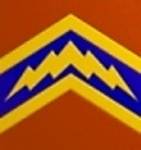Hi all,
I have been bitten by the WWI bug, and seeing the latest projects by some of you lately I would like to know some key techniques for replicating wood.
I have not found, though admittedly I have not looked hard, a step by step break down of how to paint wood, in it's various types. I would (no pun intended!) love it if you experts out there would (again, no pun intended) do a tutorial on the basics. mostly focusing on props.
-Derek
Early Aviation
Discuss World War I and the early years of aviation thru 1934.
Discuss World War I and the early years of aviation thru 1934.
Hosted by Jim Starkweather
Replicating wood (A request)

Percheron

Joined: September 23, 2006
KitMaker: 432 posts
AeroScale: 360 posts

Posted: Friday, September 14, 2007 - 06:40 PM UTC
Posted: Friday, September 14, 2007 - 09:26 PM UTC
Hi Derek.
Over the last few months requests on how to replicate wood effects on WWI subjects have taken over how to do the rigging threads
A lot of people are using oil paints to achieve some stunning effects, and hopefully there will be a feature about this soon.
Heres a link to a feature by Merlin which shows how to achieve wood grain effects using enamels and water colours.
Easy Wood Grain Effects
Hope this helps.
Nige
Over the last few months requests on how to replicate wood effects on WWI subjects have taken over how to do the rigging threads

A lot of people are using oil paints to achieve some stunning effects, and hopefully there will be a feature about this soon.
Heres a link to a feature by Merlin which shows how to achieve wood grain effects using enamels and water colours.
Easy Wood Grain Effects
Hope this helps.
Nige


Percheron

Joined: September 23, 2006
KitMaker: 432 posts
AeroScale: 360 posts

Posted: Saturday, September 15, 2007 - 03:07 AM UTC
Lampie,
Thanks for the link! I'm currently working on the Roden Fokker D.VII and was able to make the dash and floor board look woodish. I did follow the principles that were laid out by that article Merlin did. It kinda came out looking like burled maple, looks o.k. but probably not accurate. I'm all right with that as this is my first WWI kit. I hope that a more detailed article comes along soon.
-Derek
Thanks for the link! I'm currently working on the Roden Fokker D.VII and was able to make the dash and floor board look woodish. I did follow the principles that were laid out by that article Merlin did. It kinda came out looking like burled maple, looks o.k. but probably not accurate. I'm all right with that as this is my first WWI kit. I hope that a more detailed article comes along soon.
-Derek

JackFlash

Joined: January 25, 2004
KitMaker: 11,669 posts
AeroScale: 11,011 posts

Posted: Saturday, September 15, 2007 - 02:44 PM UTC
In doing the procedures that I am about to describe, there are a few ‘rules’ that you should remember. First the grain in the panels whether they be heavy or light always go from front to rear or in a word from nose to tail. They did not use barn wood so be aware of the tight grained look your going for. As you work apply the panels in pairs, that is left side- right side top and bottom. I find that the more work I do to simulate the wood paneling the less area that I will want to commit to personal or unit marking applications. Do not scrub the wash colours on the base coat use light stroke with very little pigment.
If you choose to paint your panels, use several different colours of a basic ‘cream’ or ‘off white’. Polly-S paints have a series of warm buff colours that I like and are just barely different enough, that when you place them side by side the effect is striking.
Antique white,
Dirty white,
French Beige,
Doped Linen
and Sand.
Apply them in pairs as I mentioned of earlier. They should oppose one another one on the left side and the match panel on the right side. Or the top panel then the matching panel on the bottom. Using this method and 5-6 different paints will cause the fuselage to look like a patch work quilt, but using subtle shades.
Next spray a dull coat over the base colours you have just applied and let the piece dry thoroughly. This creates a barrier that will keep your base coat intact when applying the next step.
When ready apply a wash of brown to each individual panel. This can be a orange brown like Testors #1166. Work lightly one panel at a time and flip your brush over as you go to the next panel. This wash adds the grain so always work from nose to tail. The finish your trying to reach keeps the slight variation on the base colours but mutes them under the grain wash. This must be accomplished with a subtle approach. Practice on scrap plastic if you need to.
When dry apply another dull coat and when it is dry take a rust or leather toned brown wash and apply over all with an airbrush or broad faced brush. Ths will accentuate the panel borders and give depth to the overall scheme. It really works great in smaller scales.
Another way to do a simulated wood grain is to apply a clear decal film that has been streaked or a wash applied in cut sections over the existing painted panels. Remember to be subtle. If your successful you can use these pieces for cockpit floors interior or exterior panels.
If you choose to paint your panels, use several different colours of a basic ‘cream’ or ‘off white’. Polly-S paints have a series of warm buff colours that I like and are just barely different enough, that when you place them side by side the effect is striking.
Antique white,
Dirty white,
French Beige,
Doped Linen
and Sand.
Apply them in pairs as I mentioned of earlier. They should oppose one another one on the left side and the match panel on the right side. Or the top panel then the matching panel on the bottom. Using this method and 5-6 different paints will cause the fuselage to look like a patch work quilt, but using subtle shades.
Next spray a dull coat over the base colours you have just applied and let the piece dry thoroughly. This creates a barrier that will keep your base coat intact when applying the next step.
When ready apply a wash of brown to each individual panel. This can be a orange brown like Testors #1166. Work lightly one panel at a time and flip your brush over as you go to the next panel. This wash adds the grain so always work from nose to tail. The finish your trying to reach keeps the slight variation on the base colours but mutes them under the grain wash. This must be accomplished with a subtle approach. Practice on scrap plastic if you need to.
When dry apply another dull coat and when it is dry take a rust or leather toned brown wash and apply over all with an airbrush or broad faced brush. Ths will accentuate the panel borders and give depth to the overall scheme. It really works great in smaller scales.
Another way to do a simulated wood grain is to apply a clear decal film that has been streaked or a wash applied in cut sections over the existing painted panels. Remember to be subtle. If your successful you can use these pieces for cockpit floors interior or exterior panels.

JackFlash

Joined: January 25, 2004
KitMaker: 11,669 posts
AeroScale: 11,011 posts

Posted: Saturday, September 15, 2007 - 03:57 PM UTC
While Derek may have seen some of my works already I am posting this link for future neophytes to use as a comparison to see what I meant.
my Albatros D. series builds
my Albatros D. series builds

Percheron

Joined: September 23, 2006
KitMaker: 432 posts
AeroScale: 360 posts

Posted: Saturday, September 15, 2007 - 04:55 PM UTC
Stephen and all,
Thanks for the links. This will help a lot. I have the concept down as to what needs to be done, but it is great to see it applied. Again, thanks for the info. Also, after looking over your profile (very impressive!) I'm curious if your interest in aircraft has motivated you to get you pilots license?
-Derek
Thanks for the links. This will help a lot. I have the concept down as to what needs to be done, but it is great to see it applied. Again, thanks for the info. Also, after looking over your profile (very impressive!) I'm curious if your interest in aircraft has motivated you to get you pilots license?
-Derek

JackFlash

Joined: January 25, 2004
KitMaker: 11,669 posts
AeroScale: 11,011 posts

Posted: Sunday, September 16, 2007 - 03:43 AM UTC
Been there done that. Took lessons as a teenager. The older I get the greater I realize my limitations. The machines in our foundation are flown by retired commercial pilots with far more hours that I will ever have. The great thing is that I have always enjoyed research.
 |











